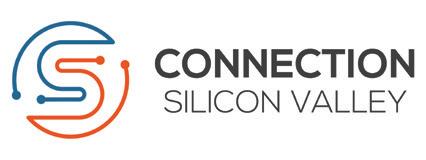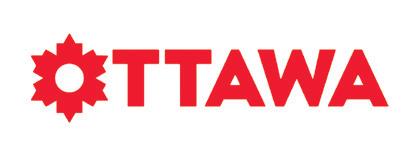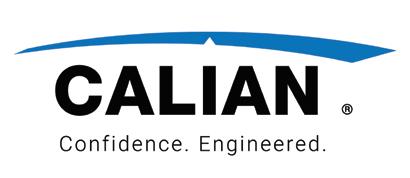THE CITY OF THE FUTURE

















































One year ago we officially opened Hub350, the gateway to Canada’s largest technology park. We have accomplished our first year of operation and WOW! Time flies when you’re having fun (and working very hard!)
When I reflect on this past year, so much comes to mind – but at the forefront is the incredible resilience, hard work and passion that our TEAM (with a capital T) has exuded throughout this year.
This group of talented women – Jules, Erin, Julia, Michelle, Kim, Natasha, Heather and Amanda – has worked tirelessly over the last 12 months to create an environment at Hub350 that fosters innovation, collaboration and growth.
It is my greatest pride and honour to have the opportunity to celebrate the direct results of their hard work with you in this annual edition of Tech Talk.
Together we have been steadfast in our mission to bring talent together with the best in Canadian industry, academia and finance. As such, we have experienced tremendous growth in our programs and operations.
Our Hub350 space has been full of exciting activity with over 5,370 visitors and 156 events. It is amazing to see so many friendly faces returning to the tech park and experiencing the unplanned collisions that our Hub350 space offers.
We welcomed five student interns to join as members of our Hub350 team. Dylan, Amy, Helena, Jingyuan and Yomna have enabled us to refine our metrics, implement improvements to our processes and improve the overall customer experience here at Hub350 over the course of their spring, summer and fall co-op placements. Their impact will forever be imprinted on Hub350, which we are very grateful for!
With Discover Technata Tech + Talent Expo back in person for the first time since 2020, we were blown away with the community response. Over 2,000 job seekers and 50+ exhibitors joined us live and in person at the Brookstreet Hotel for a chock-full day of networking, interviews and career exploration!
Our first ever Technata Hacks Hackathon series has also launched. This sold out event has attracted over 100 students from Uottawa, Carleton, Algonquin and La Cite. Thanks to the tremendous support we’ve received from our industry partners here in the park: Solace, Nokia, ROSS, Ericsson, Pleora and more, this event has enabled career making connections between industry and next gen talent.
Our leadership councils have rapidly expanded in 2022. With the support of Stratford, we now have CEO, CFO, R&D, CTO and HR leaders meeting on a month-tomonth basis concurrently to have real, raw peer-to-peer dialogue.
A vibrant culture of collaboration has also ignited across the park with volleyball leagues forming, food trucks returning and a whole series of community fundraising events in partnership with the Queensway Carleton Hospital Foundation and Ottawa Sports and Entertainment (OSEG) to bring the FUN back to our tech park!
The launch of our inaugural Living Lab Accelerator program in partnership with L-SPARK has welcomed a new wave of innovators and entrepreneurs to the park. As you can see, Hub350 is more than just a workspace. Here, our partners exchange knowledge and ideas focused on finding novel pathways to solutions.
When visiting Kanata North it’s not uncommon to see drones being tested over our golf courses, autonomous vehicles piloting on our streets and a vibrant software community testing the latest applications in medtech, cleantech, cybersecurity and more.
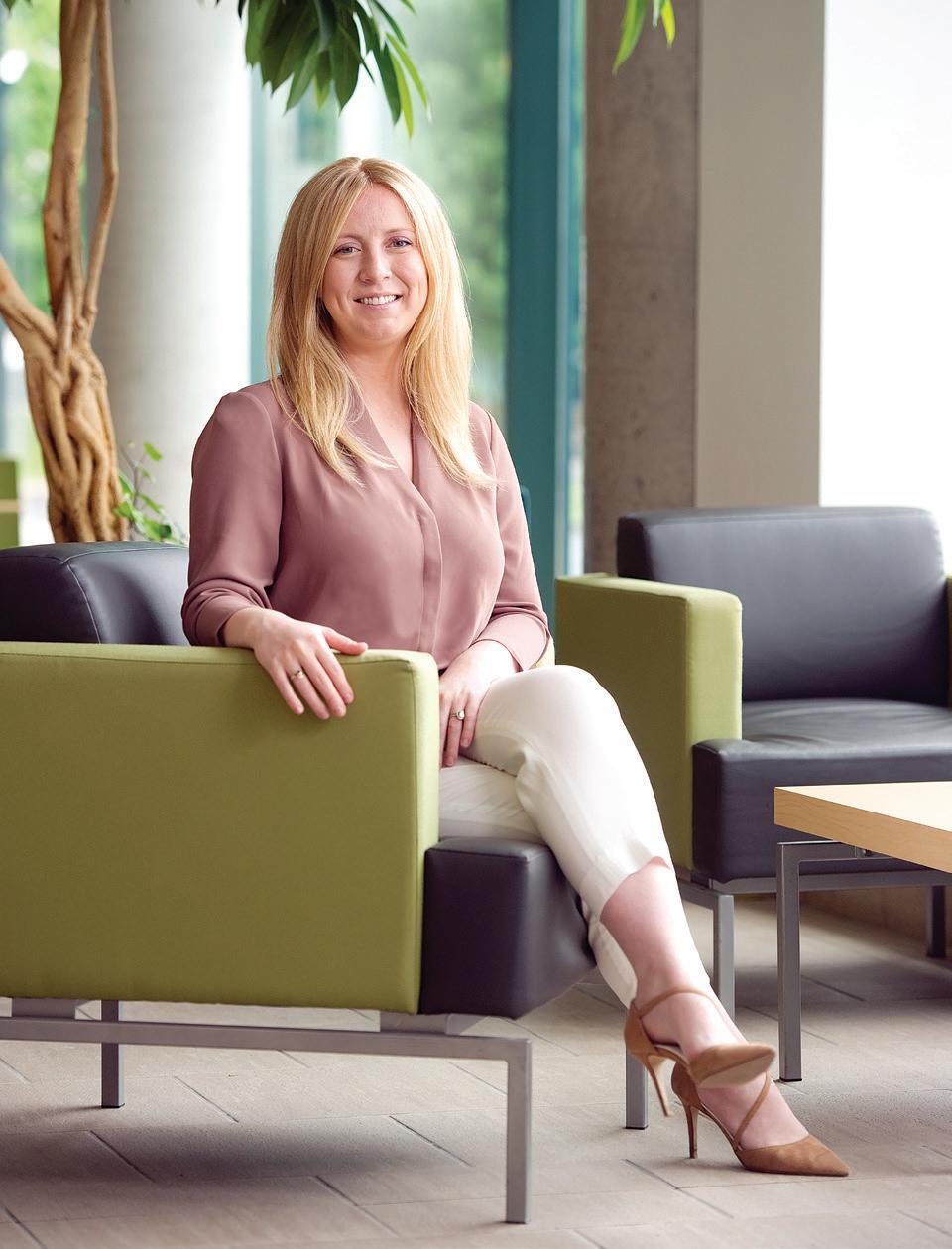
Recognized as Canada’s 5G innovation zone, the technology park in essence is a living lab and an ideal environment to test and deploy first-to-market solutions. I continue to be inspired by this journey of digital transformation that we have embarked on with our partners at TELUS.
So what’s next?
In 2023 I look forward to continuing to explore THE ART OF THE POSSIBLE as we continue on this journey of total tech park transformation. Working in partnership
with Ottawa Tourism and Invest Ottawa, we are eager to establish the Kanata North technology park as a global destination for talent to live, work, play, learn and innovate.
With Nokia and the Brookstreet Hotel well underway with their commercial and residential redevelopment plans, we can expect a very exciting new era of development across our special economic district. Our vision for a mixed-use, complete and connected innovation community is becoming clearer and closer every day.
At the heart of this transformation is our TELUS 5G Innovation Zone and I look forward to welcoming a new cohort of entrepreneurs into our Lab Accelerator in partnership with L-SPARK. This pilot project has far surpassed expectations. We will continue to foster an environment of learning and innovation here at Hub350 and I’m proud that we have created a space where entrepreneurs can effectively collaborate with industry, academics and corporate partners to solve real world problems.
The grand opening of our ROSS Video digital media lab is a monumental moment for Hub350. The powerful capabilities that this state of the art studio will bring to our members can’t be understated. I envision an environment ripe for storytelling and maybe even a bit of bragging as our member companies, partners and community stakeholders begin to broadcast their news live from Canada’s largest tech park.
I cannot thank our partners at ROSS enough for their incredible support and partnership. It might be one of my proudest moments at KNBA to have had the ability to shine a light on this homegrown technology and to implement a “made in Kanata North” solution right here within Hub350.
The expansion of our finance ecosystem, under the leadership and support of our partners at RBCx + RBC Ventures is very exciting. Creating a space for a global finance community to soft land and network with one another has been a vision of ours from day one. We look forward to continuing to expand the finance community here in Kanata North, welcoming angels, VC’s and many others over the years to come.

Most importantly, I am excited for our KNBA team. Watching this group of talented women learn, grow and take on new challenges has been one of the greatest highlights of my time at the KNBA. With so much heart, determination and potential ingrained into the DNA of our small but mighty team, I look forward to seeing a new era of leadership emerge from KNBA with the support of our all star chief of staff, Amanda Gordon.
Of course, none of this would be possible without the continued support of our partners and for that I THANK YOU! Together, with the support of the City of Ottawa and the Province of Ontario’s Eastern Ontario Development Fund, we are contributing to a very exciting future right here in Canada’s largest technology park and we couldn’t be more grateful for your support.
It is hard to believe that 12 months have passed already since the inaugural edition of Tech Talk was published in the fall of 2021. Time just insists on flying by, doesn’t it? And an active 12 months it has been, for the team at the KNBA and for Kanata North and the business park overall.
One year ago we were looking forward to the grand opening of Hub350 in October 2021. The vision of creating a state-of-the-art town hall technology centre for the benefit

of the local community has now materialized and met, if not exceeded expectations. Depending on how you want to measure success, you can count a steady and growing list of regular meetings and events, the active presence of local post secondary institutions and students, the continuing build-out of existing and new partner spaces, a guest list that has included the Premier of Ontario and other dignitaries, and more.
In terms of the Kanata North Business Park, 12 months ago we were wondering what the return-to-theoffice stage of the pandemic would look like, and when it would happen. It is accurate to say this process is still under way, and roadways are evermore busy, parking lots are increasingly full, and most importantly, the number of companies calling Kanata North home has grown. Despite the next hit of global pullbacks

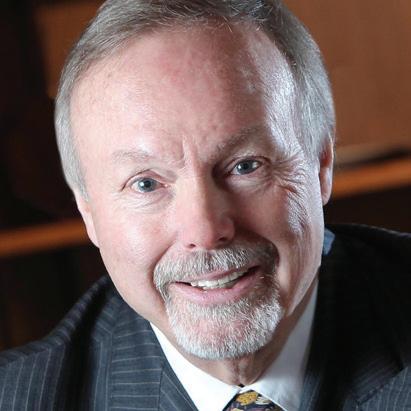


in investment and stock prices and economic forecasts, the competition for technology workers in Kanata North remains aggressive.
Why is that? The fact is companies in Kanata North are focused more than ever on diverse and sustainable technologies. Take 5G as one example. The full specifications for this tremendous new public and private wireless networking standard are not yet finalized, yet more than US$166 Billion* was invested in its development in 2021 alone! Cloud and edge computing goes hand-in-hand with 5G/ IoT and AI. The emerging demand to bring computing closer to where the action is generated US$136 Billion* in 2021 investment. Autonomous vehicle technology, compound semiconductors, the list goes on. Kanata North is a hotbed for this type of development

and commercialization. And this greater breadth than ever bodes very well not just for next year in Kanata North but for the next decade as well.
And if we look at what it will take to attract, house, feed and retain the increasing workforce and local overall population those technology projections suggest, this past year saw at least two particularly relevant announcements.
Local multinational Nokia tabled a proposal to redevelop the real estate they own in Kanata North. One of the area’s largest employers, the Finnish telecom giant filed planning documents in May proposing to replace its existing Kanata North campus with a combination of a new 500,000-squarefoot office and R&D hub, plus as many as 11 residential high-rises ranging from 13 to 29 storeys and containing up to 1,900 housing units. The office complex would also include approximately 35,000 square feet of ground-floor commercial and retail space to cater to these residents and the community overall.



In parallel, in September city council approved an application by Wesley Clover International to build a 28-storey tower with more than 250 rental apartments of varying configurations, as well as an upper-floor pool, a 150seat restaurant, and additional meeting and banquet space. The tower, located
adjacent to the Brookstreet Hotel in Kanata North, is now beginning construction and, true to the ‘character’ of Kanata North, you can expect the result to be among the most technologically and environmentally advanced properties once complete. Current plans are for the first tenants to begin occupancy by August 2025.

Developments such as these are consistent with the objectives the KNBA has set out to establish Kanata North as an approved ‘Special Economic

Zone’ and transform the area over time into more of a mixed-use district with vibrant commercial and residential components.
This can only be good for business and for lifestyle. More employees of local firms will be able to live, work and play in an integrated, progressive community featuring leading amenities and advanced connectivity. Step by step, it is yet another vision that is moving rapidly toward reality.
*Source = ABI Research
If the Jetsons were around today, they’d probably choose to live and work in Kanata North.
While flying cars and talking robots may still be a few years away, Canada’s largest technology park is making strides to turn Ottawa into the city of the future.
With innovations in several ground breaking areas including 5G connectivity, autonomous vehicles and med-tech, Kanata North is shaping what the future holds and setting the stage for Ottawa to be a leading force in the journey forward.
The community is one of early adopters and leaders when it comes to these next-gen technologies thanks to the abundance of tech workers and concentration of companies in Kanata North, says Leo Lax, executive managing director of local accelerator L-SPARK.
“In a sense, Kanata North is a living lab for leading edge applications,” he explains.
“Companies in the tech campus use leading edge products to leverage the new 5G network and enable the transformation we are all seeing today.”
Lax points to Kanata’s Calian as a key example of a company utilizing the technology we have to improve other areas – specifically the healthcare sector, which is a growing area of interest within the tech park.
The L-SPARK-Calian MedTech accelerator – which concluded this
past June – supports startups who are developing innovative connected medical services and devices by integrating their new technologies with Calian’s existing digital health platform, all with the goal of fostering stronger user experience and better patient management.
At the same time, L-SPARK is also working closely with TELUS, BlackBerry, Solace and CIRA on a separate accelerator program geared towards companies in the medical and wellness device space, hoping to transform the opportunities available in remote patient monitoring and technology to support aging in place.
Other companies in the park such as Cliniconex and Semtech are continuing to innovate in the medical technology space, oftentimes relying on other key technologies such as 5G to get the job done.
And now, thanks to the tech park’s designation as a TELUS 5G innovation zone, Kanata North is not only enabling technological breakthroughs, it is powering Canada’s fastest 5G network.
“Partnering with TELUS and supporting their vision of building a 5G innovation zone will help fuel and expand the entire park, because 5G is an essential step in guiding people and companies into the future,” says Jamie Petten, executive director of the Kanata North Business Association.
A key driving factor for the city of the future is of course Hub350, the community’s physical gateway
to Canada’s largest technology park. The world-leading tech centre is dedicated to fostering an ecosystem of innovation, collaboration and creativity, and is designed to attract talent and fuel growth in the region.
Petten explains that not only is Hub350 ideally placed to capture emerging 5G breakthroughs in a variety of industries, but it also has a lock on research and innovation via its unparalleled relationships with leading academic institutions like uOttawa, Carleton University and Queen’s University.
Students from these schools bring energy, enthusiasm and the “future proof” thinking of the next generation directly into the tech park, Lax adds, giving company’s and future talent the opportunity to connect and collaborate.
Innovation isn’t a new idea for Kanata North – in fact the community has been transforming Ottawa into a smarter, more connected city for decades. In the early 1970s, successful companies like Mitel, Newbridge and other start-ups that became part of global powerhouses like Nokia, Ciena and BlackBerry all called Kanata North home.
“Kanata is home to some of the most innovative minds in communication, cyber, artificial intelligence and leadingedge enterprise software,” Lax says.
And that is no different today.
In fact, the tech park is helping lead not only the city, but the country forward in several areas, including the creation and adoption of autonomous vehicles.
On top of L-SPARK and BlackBerry’s Connected Car Accelerator Program which launched in 2018, companies such as Ericsson, Nokia, Kongsberg Geospatial and TÜV SÜD are collaborating to bring us one step closer to a future with fully autonomous vehicles.
The KNBA team is dedicated to the goal of an autonomous vehicle transit network to serve Kanata North, as well as federal facilities in the area including the DND Carling and Shirley’s Bay campuses. This will be integrated into
the City of Ottawa’s plans for a rapid transit network, Petten says.

“This will allow us to showcase how autonomous vehicle technology can serve as a complement to conventional transit.”
While the hundreds of tech companies within the park may operate within their own verticals, collaboration is just as important in the ‘city of the future’ as technology is, adds Petten – and the team is seeing that collaborative energy first-hand.
Building a fully functional, thriving community for tech park employees and their families to live, work, play and learn in will be a key pillar as the park grows. Part of that vision is already unfolding with two major development applications on the horizon – one that
will turn Nokia’s existing campus into a 500,000-square-foot office complex and a number of residential highrises, and the other that will see a 30-storey residential tower constructed next to the Brookstreet Hotel.
The KNBA has also seen huge growth in engagement levels with executives across the park as teams return post-pandemic. In addition to its HR Leaders’ Council, the association launched new CEO, R&D, CFO and CIO councils, creating a space for leaders from multiple companies to collaborate, share, learn and support each other on the road to success.
Amanda Gordon, KNBA’s chief of staff, recently returned from a conference in Silicon Valley and said she could see the parallels between the California tech hub and Kanata North. The level of partnership in our
local tech park is reaching new heights, and by connecting startups to industry veterans, the KNBA and its partners are creating a real value-add for existing and new members to the area.
But, being on the vanguard of innovation also means being ready to adapt.
While tech companies may have turned to home offices and Zoom screens during the pandemic, Gordon says she sees them returning to the park, ready to make their next move.
“We see teams gathering again, conferences are back on, and people are reconnecting in person,” Gordon says. “It’s the start of fiscal year planning cycles for our tech community, and our meeting rooms are often overflowing with flip charts and sticky notes, all planning for the future and what’s yet to come.”
A Kanata North-based IT enterprise that expanded across the country by snapping up companies in B.C., Alberta and southern Ontario has been acquired by TELUS for $137 million.
The Vancouver-based telecommunications giant’s deal for Fully Managed closed in early 2022, TELUS spokesman François Marchand said in an email.
Fully Managed CEO Mark Scott said in a blog post the company began to explore “strategic growth alternatives” over the past year – a process that eventually spawned the deal with TELUS.
In an email, Scott called the acquisition “an exciting opportunity for
us to continue our vision of becoming the No. 1 managed service provider in North America.”
Launched in 2006, Fully Managed has over 400 employees in Canada and the U.S. The firm, which serves more than 2,000 customers across North America, also has offices in Calgary, Edmonton, the GTA, London, Ont., Summerside, P.E.I., and Vancouver.
The company uses cloud-based software and remote network monitoring technology to assist customers without requiring support workers to be physically on site. Fully Managed also has a senior care division that provides IT solutions for that sector.
In the blog post announcing the
deal, Scott said demand for managed IT services has “exploded” during the pandemic as employers across North America shifted to a remotefirst work model that’s driven more traffic to wireless networks.
The CEO said joining forces with TELUS – a global enterprise that provides internet, wireless and other services as well as healthcare software through its various subsidiaries and generates more than $14 billion in annual revenues
– gives his firm access to “vast range of resources, world-leading products, networks and both leadership talent and technical expertise to better service our customers and lead in the digital decade ahead.”
Marchand said Fully Managed’s IT expertise will be a “major asset” for TELUS as the conglomerate looks to expand its offerings in “IT support, technology strategy and proactive network management.”
The deal puts Fully Managed on the other side of the table after years of being the buyer in a string of M&A transactions.
Formerly known as TUC, the company combined with senior care technology provider CareWorx in 2016. Three years later, the firm – by then rebranded as CareWorx – acquired Vancouver-based Fully Managed Technology as it pushed to grow its market base in Western Canada and expand its product offerings.
In early 2020, the company secured $25 million in venture financing. Shortly after, it purchased Calgary-based managed services provider TWT Group in a bid to establish a foothold in the Alberta market.
Fully Managed followed that up with two more deals in 2021, acquiring another Calgary IT firm, Wappo Information Services, before buying Toronto-based IT planning, project management and network security services provider Quartet Services.
As Ross Video continues its steady march toward a billion dollars in annual revenue, even its CEO sometimes marvels at what the Ottawa-based video technology giant has accomplished.
Buoyed by timely acquisitions and a knack for innovation that’s helped make its production hardware and software a staple at television studios, arenas and live venues around the world, the firm has become an industry powerhouse.
Ross reached into that playbook once again in September, finalizing a deal to acquire Spidercam, an Austria-based manufacturer of computer-controlled cameras that hover over stadiums and other outdoor venues to provide
overhead views of sporting events, concerts and the like.
Terms of the deal weren’t disclosed, but suffice to say it’s one of Ross’s biggest M&A transactions yet.
Chief executive David Ross said Spidercam – which employs about 40 people plus hundreds of freelance technicians around the world – will fill a significant niche in his firm’s product lineup.
The Austrian company’s cameras are a fixture at big-time European sporting events like English Premier League soccer games, and were also on site at this year’s Academy Awards ceremony.
“The idea of being able to buy the largest and most iconic player in this industry is a dream come true for me,” Ross said. “It’s a big deal for us.”
It’s the 19th acquisition for Ross Video, and the first since it purchased California-based LED display screen manufacturer D3 a year ago.
Since then, Ross has stepped up its game.
After posting average annual revenue increases of 17 per cent for two decades,
the Ottawa firm is poised to more than double that rate in fiscal 2022, with projected growth of about 35 per cent.
It’s enough to leave the firm’s longtime CEO grasping for words.
“It’s mind-boggling, really,” said Ross, who took over leadership of the familyowned company from his father John in 2006. “(Revenue growth) is accelerating, which is just counter to what everybody’s telling us is supposed to happen when you get bigger.”
Yet that’s exactly what is happening.
Barely 16 months after cracking the 1,000-employee mark, Ross Video now has a global workforce of more than 1,300 and growing. The company is expanding at such a rapid clip that it’s already outgrown its main production facility in Iroquois, south of Ottawa, more than a month before it even opens an additional 55,000 square feet of new capacity.
“We are now starting to plan the next expansion before we’re finished the current expansion,” he said with a chuckle.
Ross predicts the firm will top $350 million in sales in fiscal 2022 and is probably two years away from reaching the half-billion mark. From there, he figures Ross Video is about four years from hitting the magical 10-digit milestone every CEO dreams of.

And it’s done it all without taking a cent of outside funding.
“We can definitely see the path to a billion dollars now,” Ross said. “Nineteen acquisitions and creating a true unicorn internally financed, there’s probably not too many companies like that.”
“The idea of being able to buy the largest and most iconic player in this industry is a dream come true for me. It’s a big deal for us.”


Alot can change in a year.
For Hub350, it’s when a space became home for Kanata North’s tech park.





When Hub350 first opened a year ago, the world was just emerging from lockdowns and stay-at-home orders. People were returning to a new way of work – either hybrid or remote – and Kanata North’s businesses were starting to think about how physical space could capture the soul of their companies.

“We instantly saw adoption of our space as local member companies reached out looking for a place to gather, a home away from home to work and a place to hold off-sites for team meetings,” recalls Jamie Petten, KNBA’s president and executive director.

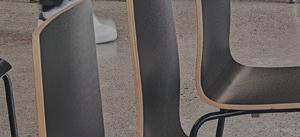












“The vision for Hub350 was to build a
gateway to Canada’s largest tech park, a space to bring the community together to gather, a brand-new ecosystem for industry, academic and finance partners to co-exist and collaborate in the heart of Kanata North. This was our North Star before COVID hit and is still true today,” she adds.
Post-pandemic, the way we work may have changed, Petten says, but the desire for a gateway to the park and all of the incredible opportunities for connection and innovation that come with it hasn’t. The magic of reconnection is happening just as it was imagined.
“While we may have added more sound proof rooms and made sure Zoom capabilities are as important as a hot cup of coffee at Hub350, our vision for a community gathering space and anchor for the tech park couldn’t be more real.”

In the 12 months since it opened, Petten and her team have seen growth in the number of people using the space. Kanata North member companies use Hub350 for strategy sessions and team meetings, and the tech park’s member network uses it as a place to connect with local stakeholders.
Located at 350 Legget Dr. in Kanata North, Hub350 is where KNBA is able to bring its programs to life, as well as connect talent with the best in Canadian industry, academia and finance.
Discover Technata was one of Hub350’s successes over the past year, with more than 2,000 job seekers meeting with representatives from 50 companies. Since the event, the job board online shows continued
opportunities for skilled talent – with over 40,000 listed opportunities, and more than 1,000 of those in Kanata North.

“This is a healthy indicator of the demand that exists for tech talent in Kanata North,” Petten says. “Over the last year we have seen many of our member companies coming through the pandemic with high growth curves. Knowing their need for talent is real confirms our focus on talent. Attraction and retention needs to remain a key priority of the KNBA.”
Another successful goal for Hub350 was to deepen the connection it has fostered between the tech park’s companies and the area’s academic institutions.





























There’s a clear demand for this connection, given the sold out, over-subscribed Discover Technata Hackathon which launched in late September. More than 100 students from uOttawa, Carleton University, Algonquin College and La Cite – along with support from several industry







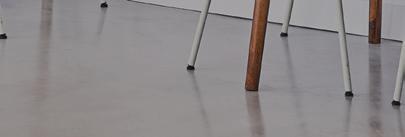










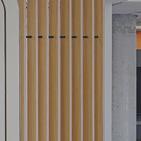



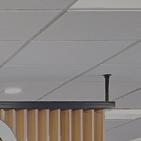
professionals – signed up to tackle a sustainability issue using 5G in a challenge posed by local tech giant Ericsson.



In partnership with local accelerator L-SPARK, the KNBA will also build in Hub350 a Living Lab to showcase technology that is created in the tech park, along with a test centre. Recognized as Canada’s 5G innovation zone, the tech park is an ideal environment to test and deploy first-tomarket solutions.

But Hub350 isn’t just about work. Another goal of the space is to create a vibrant culture. This has grown with volleyball leagues, food trucks, lunches and fundraising events.



One way KNBA will be celebrating the one-year anniversary will be the opening of the ROSS Video Digital Media Lab at the end of October.
“The powerful capabilities of this state-of-the-art studio can’t be understated,” Petten says.
But Petten and her team aren’t stopping after a year. They’re working on “what’s next” for Hub350.
“We will continue to build space and programming where talent can engage with industry, academic and corporate partners to solve real world problems,” Petten says. “This is a time of innovation, development and growth for our park and our team will be focused on the art of the possible.”
Every business culture is composed of two parts, and they’re not always equal.
One part is the aspects of culture that are developed and actively promoted by the company’s leadership. This is usually based upon the business’s core values.
The other part is the culture that emerges organically, over longer periods of time, and is influenced by the attitudes and lived experiences of employees themselves.
In the end, company culture can be defined as the norms and behaviours that become part of the experience of working there – and, perhaps as importantly, a key factor in the experience a business delivers to its customers.
Over the past few years, global events have transformed the nature of work in such a way that business leaders may need to reassess the state of their internal culture, and to ensure that their values are in line with what employees expect and need.
Technology has made it possible to work successfully from anywhere, whether it’s the comfort of an employee’s home, a coffee shop or a traditional office. Companies are recognizing as a result that they can pivot from the concept of a physical “head office” to a digital HQ, where they use the tools available to them to operate and manage people in a much more flexible manner.
If you need some ideas on how to go about this, here are a few exercises and experiments that might be worth a try:
Before hybrid work, it was not uncommon for organizations to arrange a periodic “off site” meeting. The best off-site events have been a way to develop and reinforce the culture by offering experiences that promote bonding among team members and departments.
This could be done through a series of video calls with remote or hybrid employees, or even by creating a designated channel in Slack. Rather than treat this as a one-off, think about what would happen if the off-site meeting was ongoing – an organic conversation between leadership and the team using digital channels. You could drive engagement by asking targeted questions, but also playing games or asking fun quiz-style questions to nurture relationships.
Seeing people in person regularly meant that we were all witness to what other staff did all day. Hybrid work has meant some people don’t necessarily see what those on their team or in other departments are up to, other than
when they formally connect in a virtual meeting.
Try this exercise: identify some of your more engaged employees and reach out to them. Ask them to write a “day in the new life” based on how they tackle their jobs now that they’re not wasting hours commuting. Encourage them to give a timeline of their average workday and the key sorts of milestones or habits that tend to play out. This might be when you discover employees have developed a mindfulness practice, that they play a sport on their lunch hour or learn that they dedicate spare time to volunteer work and taking care of their family. Share the results with the rest of the team. It will deepen the understanding of new norms among distributed colleagues, and might make some of them feel less alone.
Even if a company writes out their values and puts them on a plaque somewhere, not everyone reads it. As you fine-tune the way you articulate your values, you need employees to live them out – even if they’re working far from where you are.
This can be gamified and made more fun by starting a regular practice that’s akin to a scavenger hunt. Suggest to your teams that they call out their colleagues’ behaviours and actions when they clearly speak to the values you’ve outlined. Have prizes to make this a habit among everyone across the business. It will serve as a way to go beyond the values spelled out in a vision statement and infuse them directly into the culture.
Hybrid work culture can be a healthy, affirming, inclusive culture – it’s just a matter of business leaders setting the right intentions and trying a variety of approaches to continue developing it.
Last year was an exciting kickoff of Hub350 and at that point, people were still wondering what 5G was about, what it will bring in terms of capabilities and outcomes, and essentially, what is the art of the possible that 5G will enable.
In this first year we’ve made some significant strides in making 5G come to life by prototyping and testing real-world use cases with our partners over the TELUS 5G infrastructure.
We’ve deployed a private wireless network and MEC (multi-access edge computing) at the Hub, which address the data sovereignty, ultra-reliable, predictable low latency demands of the next generation 5G use cases that we are innovating and testing at the innovation hub.
We’ve also prototyped 5G enabled autonomous drones that use video surveillance for perimeter security and proactive infrastructure maintenance, just to name a couple of use cases. Coupled with AI and video, 5G autonomous drones move the needle from today’s drone applications by applying 5G’s exponentially faster speed and greater capacity to offload the processing of data to the MEC and communicate back in real time to the drone as to next actions. 5G also allows drones to travel farther, and without human operation and also allows advanced functions like the use of thermal imaging to detect intruders or to take photos of the scene.
The excitement of 5G connectivity is that it also leap-frogs today’s use cases in robotics to a whole new level of services in public and private health care, hospitality and retail, helping to deliver outcomes leveraging autonomous robots to help maximize important human workflows when supporting patients as well increased competitiveness and simply enabling more communication in scenarios where we need it most. We have our very own TEMI robot at the Hub which visitors can experience first-hand.
We are also trialing 5G and MultiAccess Edge Compute use cases like the connected worker, using AR/VR glasses to optimize knowledge transfer and safety in distributed geographies as well in health care, reducing the stress and anxiety of surgeries or treatments.
And of course all of this and more is enabled by working together with our partners, including CENGN.
Last year we were busy educating 5G adopters on the art of the possible - what is 5G and why should they care? What are some of the real-world problems they can solve with 5G?
This year there has been one of execution, making 5G coverage more prevalent across Canada. We’ve launched 5G fixed wireless access, which complements today’s wireline high speed internet access, to reach rural communities and agricultural areas which don’t necessarily have the level of
access as other parts of the country.
The auction of 3.5GHZ spectrum in June of 2021 was an exciting milestone, as it freed up a new band of radio waves that enables some of the incremental speeds and capacity that 5G promised. This year this spectrum is being deployed, furthering the rollout and capabilities of 5G.
And customers are starting to implement our 5G solution, like our recently announced collaboration with The Peel Regional Police Service team up to deliver innovative technology solutions to first responders. The collaboration provides greater connection while in the field, advancing the next generation of 911 services and connecting mental health services within the community.
We’ve only scratched the surface as to what can be co-innovated with 5G adopters and with our partners. Stay tuned for more use cases in Smart Cities, mission critical communications, intelligent traffic management and transportation, massive IoT sensors and devices being supported as well as our use of 5G for sustainability initiatives, which is a key priority for TELUS.
Also look for more on tele-operated robotics for health care to help support better outcomes for Canadians as well as AR/VR combined with 5G and MEC solutions that can be applied in health care and other industries to help drive worker safety and remote patient diagnostics.
We joined Hub350 with the philosophy that innovation and ultimately Canadian competitiveness would come from ecosystems rather than individual companies. That philosophy has proven out by what we have accomplished so far and I am excited to continue to work with our partners on the next big things. Together we have laid the groundwork for some very exciting innovation.
2WHAT
PROGRESS HAS BEEN MADE IN 5G IN THE LAST YEAR?
“Algonquin College’s partnership with Hub350 and participation in the academic pillar furthers our ability to provide increased value to our industry and community partners. Having a direct connection to Canada’s largest tech park allows us to contribute to the tech industry’s talent pipeline through both co-op and graduate hiring, while also ensuring our courses, corporate training programs, micro-credentials, and applied research offerings offer relevant solutions to the challenges faced by industry here in the National Capital Region.”
—
The innovation ecosystem in Kanata North is a vibrant and growing network catalyzing market and social impacts of talent, new technology, products, and services. The three pillars of Industry, Investment, and Academia each contribute vital elements to this system as Hub350 is strategically designed to enhance the ecosystem and accelerate company growth by enabling collaborations between these pillars. At a time when we are all excited to connect in person once again, Hub350 is supporting reconnections, new connections and collaborations for a stronger tomorrow.
Hub350’s mission to foster a vibrant culture of collaboration, where the talent of today and the talent of tomorrow can live, work, play, learn, and innovate, truly resonates with the members of its Academic Pillar. Since the launch of Hub350 a year ago, the inaugural members of the pillar –
“Carleton University has made the most of its collaborative space in Hub350 to connect talent at all levels with the innovations and opportunities in Kanata North. In addition to our outstanding coop program, hackathons and career events for our Carleton students, we are connecting with youth of all ages through our Generation Changemaker program for high school students and our new PD Day camps in Kanata, offered in partnership with Virtual Ventures and Carleton Ravens. Our space has also provided us with numerous opportunities for creative collisions between business leaders in the tech park and the next generation of innovators, through TECHNATA Hackathon, Entrepreneur Pitch Competitions and Executive Education. Watch this space for new initiatives to bring great minds together. We hope to CU@Kanata.” — DANA

“Since opening uOttawa’s satellite campus in 2018, and establishing the first academic-industry research laboratory in the Park – the Smart Connected Vehicle Innovation Centre – we have worked relentlessly to multiply our partnerships around talent, training and innovative research partnerships. We look forward to welcoming the Kanata North community to our new, second location in Hub350. Our presence in Kanata North was a strategic decision to help strengthen our local innovation ecosystem, and the dividends are already paying off for Kanata North, for the hundreds of technology companies located here, for our students and our researchers.”
- GUY LEVESQUE,ASSOCIATE VICEPRESIDENT, INNOVATION, PARTNERSHIPS AND ENTREPRENEURSHIP, OFFICE OF THE VICE-PRESIDENT, RESEARCH AND INNOVATION, UNIVERSITY OF OTTAWA
Algonquin College, Carleton University, the University of Ottawa, and Queen’s University – have each been creating and participating in opportunities to engage and explore collaborations with the over 500 members of the Kanata North Technology Park as well as with each other. The vision is for such opportunities to build students’ skills, networks, and experience, and provide pathways to enhance research and development, while synergistically enabling companies to communicate their needs, particularly with respect to talent, expertise, and technology, which will inform and shape collaboration strategies and opportunities with post-secondary institutions.
Through the members of the Academic Pillar, the full potential to support the immense talent available and developed at the institutions, improve knowledge mobilization, as


well as increase efficiencies through collaboration across post-secondaries is just starting to be realized. Initiatives during this past year have enabled students to connect with experiential learning, career, and professional development opportunities through resources such as the Discover Technata job board as well as over 20 events in partnership with or leveraging the space at the Hub350. Some special highlights include the Discover Technata Career Fair, Discover Technata Unlocked, and Discover Technata Hacks.
New interconnections are also supporting the development of research collaborations that leverage cutting edge knowledge from across science and technology, health and medical, policy, education, and business communities at the post-secondaries to support next generation products, services, and companies of the future.
As the Academic Pillar continues to establish itself, the physical space at Hub350, the community in the technology park, and the advantages of the Special Economic District Zone designation bring exciting prospects for academic collaboration. The space provides a modern and inviting environment and culture for students, faculty, industry executives, and support providers to work and connect through organized meetings, events as well as impromptu collisions. Moreover, the variety of companies and participating members and opportunities for ‘living
“Queen’s University is keen to support building the academic pillar in order to understand industry needs and build synergistic relationships. For example, the opportunity to partner with Hub350 and the University of Ottawa to deliver Academic-Industry Meeting Day (AIMdayTM)

Mobility provided unique opportunities to support matching academic expertise with industry and municipal challenges in the advanced mobility sector with the goal of developing solutions through collaboration.”
— JIM BANTING, ASSISTANT VICEPRINCIPAL (PARTNERSHIPS AND INNOVATION), QUEEN’S UNIVERSITYlabs’ enrich the ecosystem, creating an environment to greatly enhance technology development and validation.
In order to build a strong and impactful Academic Pillar, the post-secondaries are keen to better understand, learn and respond to the needs from the broader Hub350 and Kanata North community. How could we work together to support your needs to effectively build stronger companies and an effective innovation ecosystem?



Don’t let RBC’s old age fool you. While the bank boasts nearly as much history as Canada itself, it refuses to simply settle into the role of a wise elder. Rather, RBC wants to compete with tech’s biggest innovators, tapping its deep experience, capital, and networks to come out on top.
They say big ships steer slow, which is a nonstarter in today’s fast-paced tech landscape. This makes finding the right captain for the job—one who can deftly translate size and ambition into speed and real-world results—essential.
Enter: Sid Paquette, the man charged with merging and leading two of RBC’s most innovative arms. Paquette was first hired three years ago to lead RBCx, the tech and banking innovation platform of RBC. In April 2022, he was also appointed head of RBC Ventures, a cutting-edge group tasked with going beyond banking to solve problems in strategically important areas.

Now, both arms unite under a rebranded RBCx. It’s a powermove that will reshape Canada’s innovation ecosystem and amplify RBCx’s role as a key industry leader.

“In a short period of time, RBCx established itself as one of the leading tech brands in the country, and certainly within the financial institution world. It made sense to carry forward with that momentum,” says Paquette.
Of course, this is all much easier said than done, but he welcomed the challenge. Step one was working to refine and communicate the new RBCx’s mission and brand story.
“You need to have a clear message in the market,” says Paquette. “If you can’t communicate what you do, who you serve, and how you serve them in
a clearly articulated manner, then the story is broken.”
Finding the right company structure, sorting out logistical details, and implementing new operations will be ongoing projects. It’s important to Paquette that RBCx will continuously transform, morph, and push itself to be a better version of itself.
Some may find this type of ongoing pursuit daunting, but he says it’s a process and feeling RBCx employees should get accustomed to. “Members of this team have to be super, super comfortable with ambiguity. If you stay on the forefront of disruption, no one can disrupt you.”
While RBCx lives and breathes tech innovation, its biggest assets are talented team members who come together from two separate brands to complement and boost one another under a single banner. He points out this doesn’t only benefit clients and partners, but provides a unique opportunity for employees.
“When you’re creating a brand and presence, the brand is an amalgamation of all the individuals on that team’s
personal brands. The way we operate, the way we think about personal brand development, and the way we’re going to highlight people, will recognize and celebrate that reality,” he says. “The only way all of this works is with the amazing talent that we have.”
Paquette believes talent needs to be recognized not just internally, but publicly as well—and RBCx fosters the perfect environment for that to happen. Team members will be powering the biggest names and up-and-comers in Canadian innovation, which will give them outside exposure and spark invaluable word-of-mouth conversations.
“People will talk, and they’ll be talking about ‘the rockstar at RBCx who helped me grow my business,” Paquette says. “Now, all of a sudden, your personal brand explodes based on the value you’re driving, and it’s not siloed under one organization,” Paquette says. “You’re exposed to the world.”
When it comes to the core bank, RBCx’s value extends beyond making a mark in the tech space or powering a bold future. “If you altruistically help RBC business units, internal ventures, and external companies reach their objectives using the platform we have built, there is zero question that this will help the core bank,” says Paquette. “ When you focus on providing value, the P&L impact will always follow. We’ve already proven this on the tech banking side”.
As ambitious as all of this sounds, Paquette’s metric for success is as straightforward as it can get: “I just want us to be the driver of change both internally and externally.”
With the official launch of the new RBCx, Paquette and his team are well on their way.
Consulting for IKEA, Walmart, and the United Nations. Building on the blockchain, creating with CRISPR, innovating with AI, and so much more. What sounds like a bucket list to most, was a happy reality for this year’s class of The Knowledge Society (TKS) Ottawa students.
And it can be for the teenager in your life too, starting this September at Hub350.
The Knowledge Society (TKS) is a global 10-month innovation program for students ages 13-17 to explore how they can use emerging technology, foundational mindsets, and 21st century skills to tackle some of our world’s biggest problems, while being part of a global community of like-minded people.

The program is modeled after curricula from Harvard, Stanford, and MIT, and designed to replicate the learning environments of forward thinking organizations like Google and Facebook.
Simply put, TKS is a training ground for the real world. Which is why TKS is SO excited to have joined Hub350.
It’s important for our students to not only learn about what it’s like to work
within the real world, but to actually build and work alongside them. At TKS, students learn how to make it real.
Hub350 provides that opportunity for students in Ottawa, to learn from the local tech community, and also to give back and contribute to the local ecosystem.

It benefits Hub350’s partner companies too.


Students not only collaborate by sharing their Gen Z perspective on what these companies could be doing to tackle real challenges they face today, but they help to solve them as well.
At TKS, students learn to develop a bias towards action, a bias towards building.
Students participate in weekly interactive sessions (run out of Hub350), participate in group projects in tandem with industry, and build a portfolio of projects they have built with emerging technology, designed to solve real problems.
Hub350
If it’s true that two heads are better than one, the happenings at Hub350 may have blown more than a few minds during its first quarter.
Hub350 is where Ottawa’s innovation and tech community go to collaborate,


create and build the latest cutting-edge tech. Launched just over a year ago, Hub350 supports the Kanata North Technology Park by providing spaces equipped for government, academia and the tech industry drivers to share ideas with each other and the world.


Since its launch, Hub350 has proven that another old adage (uttered by that great philosopher, Kevin Costner) is true. If you build it, they will come. Hub350 has been abuzz with events putting great Canadian innovative minds and new talent in the same room.
Who’s heeded the call so far?
The Knowledge Society, an organization that trains Ottawa highschool students in a 10-month innovation skill-building program, held their first in-person event at Hub350.
Carleton University’s School of Journalism, Innovation Hub and CU@ Kanata delivered a joint presentation on several topics, like how to leverage the media to gain exposure and how to get VC funding.
An Algonquin College Corporate Learning Centre Training Session helped 50 attendees learn about mental health and employee wellness initiatives.
Carlton University’s Faculty of Engineering and Design: Women in Engineering & IT Program was a twoday event backed by 16 industry and government partners to help close the gender gap in STEM.
makes a splash in its first quarter
Hub350’s newest member is giving kids the chance to become the next big innovator
Employees at Kanata’s Ericsson office had the opportunity to take a look at the company’s latest 5G innovation – all from the comfort of their parking lot.
Ericsson’s Imagine Live North American tour, which features a travelling trailer outfitted with the company’s latest tech, made a stop in the Kanata tech park to see what the year 2030 might look like with improvements in 5G programmability. The mobile unit will visit more than 60 customer sites across Canada and the U.S.

The goal of the tour is to allow current and prospective clients to learn more about Ericsson’s radio system, private 5G and various Operations Engine technologies. In a COVID era when travel is still a bit challenging, it’s a little like bringing the trade show booth to the customer.

In the mobile unit, visitors were able to interact with the hardware on display, watch product demonstrations and talk to Ericsson’s experts.
A big draw for attendees is one of the company’s new cell receivers to go on cell towers, the A3268, which weighs only 19 kilograms – half of what a typical cell weighs, making it easier for installation.
Also catching a lot of folks’ attention is the private, mobile 5G networks Ericsson has created.
Mark Murphy, a technology architect from Texas travelling with Ericsson’s Imagine Live tour, says the tech on display gives us a chance to imagine what life may be like in the future, where global connectivity is a routine occurrence. He has a way to explain that connectivity on a personal level.
“I like to think of it as a personal butler and valet,” Murphy explains. Some would call it AI, but he comes back to programmability.
“If I think of my phone as the router, all my information is in the cloud, including my preferences for things like the temperature in my home. That’s my butler, it knows when I like to run the dishwasher, the washer/dryer, how hot/ cold I like it, etc.”
“But then when I travel, all of those preferences move with me in the cloud. My butler stays home, but now I have my valet. That valet will know when I check into a hotel room how I like the room to feel,” he adds. Of course there are more sophisticated examples, but this was the easiest way to explain the company’s plans for a more programmable network.
Programmability also means that cell providers can be more efficient and sustainable with a 5G network – maximizing service at heavilypopulated events (think of the masses gathered around Parliament Hill on Canada Day, or the morning rush hour along the Queensway).
The unit packed a lot of info into a small space – all of which was powered by solar energy and rechargeable batteries, part of Ericsson’s commitment to cut emissions by 50 per cent throughout its supply chain and portfolio by 2030.
If you’re wondering where the Kanata North tech park has been making recent headway, the smart health technology sector is certainly a place to look.
Kanata North accelerator L-SPARK recently partnered with digital health provider Calian to launch a new program to help healthcare companies grow and bring their innovative health softwareas-a-service (SaaS) solutions — allowing users to connect to and use cloud-based apps over the Internet — to market by integrating them with the Calian digital health platform.
“The healthcare industry is moving away from the closed, siloed systems of the past to a more open, interconnected ecosystem,” said Sacha Gera, president, IT and cyber solutions at Calian.

“We’re excited to partner with these innovative Canadian companies to solve problems for our customers and increase the pace of digital transformation.”
Kanata North has seen a number of companies making waves in the industry within the past few years. In 2020, more than 1,600 senior care homes adopted healthcare IT company Cliniconex’s automated messaging technology to streamline communication between staff, residents and family, resulting in one million hours of saved staff time.
And, just recently, California-based Semtech Corporation — a leading supplier of circuits used in computing and communications with a presence
in Kanata North — announced a partnership with international hygiene group Ontex to develop an Internet of Things (IoT)-enabled diaper tag for seniors. Though Ontex developed and already owns the smart, sensor-filled diaper concept (dubbed Orizon), it’s Semtech’s existing patents that brought their vision to fruition.
Two of Semtech’s networking devices — the LoRa and LoRaWAN, both especially small and energy-efficient — connect the diapers to caregivers’ phones, alerting them via an app when a pad needs to be changed, and can also accurately determine its saturation.
“Improving the quality of life of patients was a key goal in developing the Orizon smart diaper tag and the reason why we choose to utilize LoRaWAN for the solution,” said Annick De Poorter, executive vice president, innovation and sustainability at Ontex.
“Caregivers and patients need the flexibility to move around distances in which LoRaWAN was able to securely provide coverage.”
Ontex and Semtech’s diaper tags come at a lucrative time for the global smart hospital market. According to Statista, the sector is expected to reach a value of $84 billion USD by 2026, with products to increase the quality of care provided outside of hospitals playing a key role in this growth.
“The Orizon smart diaper tag is a strong example of how LoRaWAN is making the world a better and smarter place to live through the improved patient experience,” said Marc Pégulu, vice-president of IoT product marketing and strategy for Semtech’s Wireless and Sensing Products Group.
“Health and safety should never be overlooked.”
Intouch Insight Ltd., a leader in customer experience measurement solutions based in the Kanata North Technology Park,
announced a $7-million contract to provide geolocation data capture services across the United States for an unnamed NASDAQ-100 American technology company.
Expected to last five months, the contract is a new project from an existing client who has been purchasing data capture services from SeeLevelHX — a market research firm and one of Intouch’s recently-acquired entities — for the past four years. Intouch plans to use its network of North American resources to collect data in various locations required by the client in their efforts to configure a new global augmented-reality mobile game.
“The acquisition of SeeLevelHX last fall was the catalyst for this growth and shows the power of combining Intouch’s unique capabilities and technologies with the expanded customer base from the acquisition,” said Cameron Watt, Intouch president and CEO.
Geospatial data capture has been a prominent part of video game development in the past decade, allowing developers to integrate more authentic scenery and physics into the game design process. Within the sphere of augmented reality, using real-world data to create realistic 3D maps has become an integral part of ensuring an immersive experience for gamers.
The company intends to use LIDAR remote sensing technology for this project, said Watt, which determines ranges by targeting an object or a surface with a laser and measuring the time for the reflected light to return to the receiver. It is especially useful for creating 3D representations of particular locations, including the Earth’s surface and ocean bottom.
“What makes this opportunity particularly exciting, besides its size, is that it illustrates how our core capabilities can extend beyond our current service offerings,” Watt added.
“More and more companies are looking to have the real world represented accurately in their virtual world and we have the capabilities to help them make this happen.”
A new state-of-the-art facility in Brampton, Ont. will house hundreds of highly-skilled employees as well as some of the country’s most innovative space robotics products.
MDA Ltd., a leader in the global space industry and long-term resident in Canada’s largest technology park, announced it will be constructing a new global headquarters and Space Robotics Centre of Excellence in the province in order to continue to support the company’s continued growth and success.
The new 200,000 square-foot centre will feature state-of-the-art labs, manufacturing, R&D, and assembly, integration and test facilities as well as a Space Robotics Mission Control Centre which will allow the MDA team to provide on-orbit operations capabilities to its clients.
“This new facility will be home to our growing team and will further unlock the
potential of our world-class engineering and space mission expertise, while allowing us to bring to market a full suite of innovative commercial space robotics products that leverage Canadarm3 technology,” said Mike Greenley, CEO of MDA.
The MDA Centre of Excellence for Space Robotics is currently under construction –slated for completion by the end of 2022. The new centre is expected to house nearly 700 employees, which will help drive economic growth and prosperity in the region.
“Ontario is home to the brightest talent and a thriving innovation ecosystem that make projects with incredible companies like MDA, a global leader in the space robotics industry, possible,” Vic Fedeli, Minister of Economic Development, Job Creation and Trade. “Today’s investment will strengthen Ontario’s vibrant advanced technology sector, create exciting new jobs and ensure that scientific breakthroughs will continue to be made in our province.”
emergency management systems and provides Niagara with a secure mass communications solution.”
Nanometrics Inc., an award-winning seismic monitoring equipment company based in Kanata North, launched its Abalones Ocean Bottom System (OBS), a new turnkey technology to make ocean floor monitoring an easier task.
BlackBerry QNX recently announced that Niagara’s 13 municipalities and regional police service will use BlackBerry AtHoc — a critical event management platform and the result of a recent partnership with TELUS — to revamp its new crisis response system to the benefit of nearly 500,000 residents.

“Ensuring the safety and well-being of our community requires reliable communication systems and collaborative partnerships,” said Ron Tripp, the Niagara Region’s acting chief administrative officer.
“BlackBerry AtHoc modernizes our
BlackBerry AtHoc is expected to allow the Region of Niagara to improve its communications in times of crisis, making law enforcement’s responses faster and more effective. Already in use by millions of users around the world, the platform boasts an unprecedented ability to allow communities and organizations to quickly gather the information they need to make critical safety decisions in real-time, and was made possible by the collaboration between BlackBerry’s security technology abilities and TELUS’s connectivity.
“We’re thrilled to build on our longstanding relationship with BlackBerry to bring best-in-class emergency solutions to Canadians,” said Marshall Berkin, vicepresident of industry solutions at TELUS Business Solutions.
“The deployment of BlackBerry AtHoc in the Niagara Region will connect Canadians in an exciting new way, keeping them safe and informed during emergency and critical situations.”
Watching underwater tectonic activity and changes that could lead to earthquakes or tsunamis is difficult, largely due to the significant amount of power required to operate existing ocean bottom data acquisition systems, making them unreliable. However, Nanometrics’ new turn-key monitoring system — designed, supplied, built and installed fully complete and ready for operation by researchers — aims to address these energyrelated concerns head on.
Designed in partnership with the Scripps Institution of Oceanography at the University of California San Diego, the Abalones system features a Pegasus OBS data collection system, which boasts an ultra-low power consumption rate meant to streamline workflows — allowing researchers to collect the best possible data in shallow, intermediate, and deep ocean waters down to 6,000 metres.
A coalition of the country’s leading space innovators announced the creation of Space Canada, a national industry association aimed at offering a united voice for Canada’s space sector.
The formation of Space Canada — to be headed by former New Brunswick premier Brian Gallant — was driven by the global space economy’s recent rapid growth, as well as the increasing potential for space technologies to solve economic, societal and planetary issues through job creation and innovation.
“Space technology monitors our land ecosystems and coastlines, supports disaster relief and protects our oceans and forests,” said Gallant. “Moreover, space can close the digital divide, particularly in our Northern, remote and rural communities, and enhance our national security.”
Given the growing potential for even more expansion within the sector, Space Canada is also looking to convince the Canadian government to create a National Space Council to guide the country’s space policies and investments amid the global space race, which has gained significant momentum in the past decade.
“From small to large, Canada’s space companies are looking to position the sector as a driver of growth, jobs, innovation, intellectual property and exports that will contribute to a future for our country that knows no bounds,” said Mike Greenley, CEO of MDA Ltd. and vice-chair of Space Canada.
“It is time to re-establish Canada’s leadership in space on the world stage in collaboration with government, which plays a key role in space as a developer, owner, operator and regulator of space systems, as a funding partner, investor and anchor customer to innovative Canadian space companies.”
Space Canada currently consists of nine founding members: Calian, GHGSat, Magellan Aerospace, Maritime Launch Services, MDA, Mission Control, NorthStar Earth & Space, SpaceBridge, and Telesat, though is looking to expand its membership as it gains traction within the industry — something Dan Goldberg, CEO of Telesat and chair of Space Canada, said is essential to make
a substantial economic impact.
“Canada has long been a leader in the space sector and is well positioned to capture the explosive growth in the industry to grow our economy and create high quality jobs,” he said.
“Now is the time to be ambitious, work together and position Canada at the forefront of the New Space Economy.”
Hub350 was buzzing in October as close to 100 students met for the launch of Kanata North Business Association’s first-ever hackathon.
KNBA president Jamie Petten welcomed students from Carleton University, University of Ottawa, Algonquin College and La Cite to Hub350 for Discover Technata Hacks; a first of its kind initiative in the tech park aimed at solving real world problems by leveraging the power of 5G.
Samir Ayachi, head of 5G SW Development Group and deputy head of Ericsson Ottawa, introduced the

possibilities that come with a 5G network, and spoke to what life might be like by 2030 with more reliable, efficient and sustainable networks.
“If you can imagine it, it’s possible,” Ayachi told the students.
As he introduced the real-world problem students were to solve – develop a solution to water and electricity waste in the tech park – he invited them to consider the convergence of the physical and digital worlds, and the power of 5G.
KNBA’s event organizer Erin Moretto said she likes that the Hackathon brings students and more than 20 tech mentors together to work together to solve a problem. It is part of the tech park’s close relationship with Ottawa-area postsecondary institutions that make events like this possible, she added.
One of the region’s largest employers is proposing to tear down its existing Kanata North campus and replace it with a new 500,000-square-foot office complex and as many as 11 residential highrises containing up to 1,900 units.
In planning documents recently filed with the city, Finnish telecom giant Nokia says it wants to construct a new office and R&D hub on March Road covering half a million square feet, with about 35,000 square feet of ground-floor commercial and retail space.
The new campus, which would be located just south of Nokia’s current facility at 600 March Rd., would include two office towers and parking spaces for 1,344 vehicles.
In addition, Nokia says it plans to raze its existing office buildings and surface parking lot and build 11 residential
towers ranging from 13 to 29 storeys in their place.
The proposal calls for 1,900 units along with nearly 50,000 square feet of retail space, restaurants and other amenities and 2,410 parking spots.
If the plan comes to fruition, the new development would add thousands of additional residents to an area that’s already among the city’s fastest-growing neighbourhoods.
Kanata North Business Association executive director Jamie Petten, who’s discussed the plan with Nokia, says the development could play a big part in the tech park’s “necessary transformation” into a mixed-use district with vibrant commercial and residential components.
“Our daily lives include a lot of other elements beyond just that single use of office space,” she said.
In addition, Petten said the tech park is striving to become a “living lab” where companies like Nokia, Ericsson, Ciena and others can showcase technology such as autonomous shuttles in realworld conditions.
“Our companies are growing faster than ever and the momentum is great, but in order to continue with that momentum, we need to foster an environment within the park that enables talent to live, work, play, learn and innovate,” she said. “This proposal from Nokia really supports that.”
Nokia, which employs about 2,400 workers in the National Capital Region, believes the redeveloped site could become the focal point of a district featuring a mix of office, residential and retail spaces.

The Finnish firm conducts much of its research into next-generation 5G communications technology at the March Road facility, while fellow network infrastructure giants Ericsson and Ciena also have major R&D centres nearby.
In all, the Kanata North tech park employs more than 30,000 workers at 500-plus companies. Nokia is betting that the area’s population will continue growing rapidly – and that tech employees will want to return to their offices and live nearby.
“It is likely that many of the future residents of the buildings will work in the (Kanata North tech park) and will be able to walk or cycle to work,” planning documents prepared for Nokia by consulting firm Novatech say. “Although subject to future Site Plan applications, the amount of residential (space) will allow for a broad range of apartment sizes that will cater to a wide range of people and budgets.”
Noting that about half of the tech park’s workers already reside in the neighbourhood, Petten said the addition of even more coffee shops, restaurants, daycares and other amenities under Nokia’s plan will make Kanata North an even more attractive place to live regardless of whether some residents opt to work from home.
Every time Greg Johnson, president of RBR, rides his bike to work he hits a crossroad.

“I usually get as far as the coffee shop in Stittsville called ‘Quitters’,” he said. “And I have a long pause at that point as to whether I should follow its advice.”
To be fair, Johnson’s commute is 45 km, one-way.
Fortunately for the RBR cyclists who have a shorter commute, they’re getting paid to hop on their bikes in the morning. Since May, the company’s Greener Commuting Incentive Program has been paying cyclists $0.50 per kilometre, carpoolers $50 per week toward gas, and giving public transit users a free monthly pass.


“It’s an inconsequential cost to the company,” said Johnson. “Today’s dashboard is 5,000 km. We have 100 employees, so $2,500 is a drop in the bucket.”
He can pull these numbers quickly
because they’ve been tracking kilometres since the program started.
So far Fabian, an 18-year-old French intern, is leading the pack. “He does 54 kms a day and his average speed is almost 30 km/h. One day he told me he was really irritated,” Johnson said. “He said, ‘You know, there’s this guy who
averages 32 km/h, and I’m only averaging 30. The next week, he came to me and said, ‘Oh, I just found out. He’s got an electric bike.’”
The RBR philosophy: ‘Why not?’
“We didn’t pay anybody to bike to work last year, but why not try it? If it doesn’t work, that’s okay. It’s no skin off our backs to have tried and failed,” Johnson said. “We’re always trying things and some of them are popular and some of them are not popular and that’s okay.”
Maybe that’s why RBR tends to attract people who aren’t fans of the status quo.
So far his employees have spearheaded a composting program as well as installing bike racks inside the office when they hit their parking limit outside — the landlord eventually used their design to install more.
Take care of your employees like you do your customers
Whatever the reason for their employee’s creativity, the way RBR supports their staff is working. Their employees actually prefer going to the office over working from home.
“There’s no way you’re going to run a company that’s only for your customers and ignore the needs of your staff. Both communities need attention,” said Johnson. “We find those friction points and get rid of them like we do for our customers.”
In addition to valuing their employees, another secret to their success is keeping things simple.
“We thought of the Greener Commuting Incentive Program in a leadership team meeting on a Wednesday afternoon,” said Johnson. “During the meeting we worked it out on the whiteboard, told the staff the day after, and started paying out the Monday afterwards.”
“It’s easy to do, anybody can do it. We did a viz for it, because it’s easy for us,” said Johnson. “But you could do this on a piece of paper.”
In spite of the challenges Johnson faces on his own bike commute, it’s clear he has no intention of quitting on his employees.
A multibillion-dollar U.S. company that manufactures semiconductors for the likes of Amazon, Facebook and Google is ramping up its presence in the National Capital Region after acquiring a Kanata microchip design firm earlier this year.

Marvell said it plans to launch a “significant expansion” of its Canadian footprint that will see it build out its offices in Ottawa, Toronto and Vancouver as it develops cuttingedge semiconductor technology for the cloud, 5G and automotive markets.
“Canada has become a major destination for technology and innovation, with a growing pool of semiconductor talent,” Marvell chief executive Matt Murphy said in a statement. “We are excited to further build our presence in the country and contribute to this growing and thriving community.”
In April 2021, Marvell acquired fellow publicly traded California firm Inphi Corp., which manufactures semiconductor components and has a major R&D lab on Legget Drive in the Kanata North tech park. Marvell further boosted its Ottawa presence in January when it acquired semiconductor design firm Rianta Solutions, which has two local offices also based on Legget Drive.
Rianta’s chief technology officer and co-founder, Nizar Rida, has joined Marvell as its vice-president
of engineering and Canada country manager. Rida said the two companies were already “very close” – Rianta has been designing components for the California firm for nearly a decade – and it made logistical and financial sense for the enterprises to join forces.
“It was a natural extension for us to be part of Marvell,” Rida said.
“They know us; we know them. We had multiple (offers) and our staff overwhelmingly voted to join Marvell because we were very comfortable with how we operate with Marvell. Things just felt natural. The integration was almost effortless.”
Rida said he expects Marvell to keep tapping into Ottawa’s experienced tech talent pool while putting its technology through the paces at facilities such as the Area X.O autonomous vehicle test track on Woodroffe Avenue.
“Ottawa has a long history of innovation,” said the former Nortel engineer, who helped launch three startups after leaving the one-time telecom titan – Sybraus Techologies, Galazar Networks and Rianta, all of which were later acquired by major U.S. telecom or semiconductor manufacturers.
“Some of the most advanced technologies that Marvell is looking at is going to be done here at the Ottawa office.”
An Ottawa-based co-working company that made headlines for taking over a chunk of Shopify’s former downtown headquarters is expanding its footprint with a new location in Kanata.
TCC Canada recently opened a 30,000-square-foot facility on the fifth floor of 1000 Innovation Dr. in the heart of the Kanata North tech park. The new location replaces TCC’s previous Kanata digs, which were located in a smaller space just a few hundred metres west at 555 Legget Dr.
TCC owns and operates five coworking spaces in Ottawa and two in Vancouver. The company made a splash last year when it subleased several floors in Performance Court at 150 Elgin St. from e-commerce giant Shopify after the software firm vacated the downtown office tower following its shift to a remotefirst work model during the pandemic.
“We really seem to be in our age now, because I think what we offer has become more and more prevalent and appealing to pretty much anyone,” he said.
TCC signed a 10-year lease at the building, which tenants began moving into recently with about 60 per cent of the desks now leased, Cochrane said. The client list includes heavy corporate hitters such as Dell and Westinghouse, and Cochrane said TCC is in the midst of finalizing a deal to lease up to 85 desks to one of the world’s biggest tech firms.
TCC also hopes to expand its Kanata presence further at a second building that’s tentatively slated to be constructed next to the office at 1000 Innovation Dr. While that project is still on the drawing board, Cochrane said his firm is in advanced discussions with landlords in Montreal and Halifax about opening new locations of up to 30,000 square feet in those cities by the end of 2023.
When it comes to thinking about what the Kanata North Business Association could be, Amanda Gordon has always been able to see the big picture.

She joined the Board of Directors at KNBA in 2017 and helped with the recruitment of a new president when Jenna Sudds announced she was leaving to pursue her career in politics.
Gordon then recruited current president Jamie Petten, whose bold vision for the KNBA has transformed the association into what it is today – and the big plans for where it will go next.
In a fun twist of fate, Gordon is now Petten’s chief of staff – the first time the association has had such a role.
“I swear I had goosebumps. To be able to work with Jamie side-by-side and really dig into this project. It’s been like a project of my heart for a long time. That was so exciting,” she says.
Timing is everything, and Gordon says that it’s crucial for KNBA to dig into the ‘what’s next’ – not only for the community association but, what’s going to happen in the park.
Having an internal chief of staff is a big part of that as it will help Petten and the KNBA look at the association’s strategic vision and what is needed.
And, with so many exciting projects and developments on the horizon, it couldn’t have come at a better time.
In her first week with the organization, Gordon says she simply dedicated her time to meeting with team members, finding out who they are and how they see the impact they can make on the KNBA.
“It’s kind of like scaling a business where you reach that stage when you really need to focus on how you work, really cleaning your processes,
introducing systems to make you more efficient. This was one of the key roles that Jamie felt she needed… somebody that is her right arm, that is really digging in on the incredible team that she has built.”
Gordon’s background in recruitment and talent management will also come in handy as the KNBA continues to scale up its team to meet demand.
A senior human resource leader for the past two decades, Gordon has always had a hand in helping a company flourish by growing its team to match its business objectives. As well as recruitment, she specializes in executive coaching, mergers and acquisitions support, employee value propositions, as well as branding and communications experience. As a partner at Boyden executive search, she led the company’s global tech arm. Before joining KNBA, she was vice-president, people at Rewind.io because, as she writes in her LinkedIn bio, “I am a builder.”
Building is a big reason why Gordon is excited about her new role at KNBA. She says that with Hub350 continuing to grow and industry partnerships in the park flourishing, it will be all hands on deck in Kanata North.
And, as Gordon puts it, things are set up for a major shift at the KNBA this fall, including some key strategic events in the pipeline, such as a trip to Silicon Valley to meet with business associations there to see how they’ve built up their organizations.
The KNBA will also be focusing on its member businesses as work continues to evolve post-pandemic. “We need to consider programming and how we can best support a community that is increasingly in hybrid or remote work models,” Gordon says.
From a personal perspective, Gordon is excited to work in her “backyard,” having lived in Kanata North for decades.
“I drove into the park on my first day here, and I swear I had one of those unicorn moments. I just felt: I’m home. I love this place.”
As more workplaces become increasingly data-oriented and automated, Qlik — a Pennsylvania-based business analytics software company with a long-standing presence in Kanata North — is working to bring user-friendly platforms to small and midsized businesses to make this trend accessible to all enterprises.
“We’ve always been focused on giving our customers full mastery of their data, so they can make better informed decisions for their business,” said Jarno van Hurne, global product line director for Exact. “Our combined offering with Qlik can level the playing field (for SMEs) tremendously and significantly enhances the value of offerings we bring to market.”
The partnership comes at a time when the demand for and importance of data analytics is higher than ever. According to a recently released report by Qlik and The Future Labs, business leaders and employees alike predict that data literacy will be the most in-demand skill by 2030. In fact, 85 per cent of executives believe it will become as vital in the future as the ability to use a computer is today.
“We believe data literacy can empower decision makers at all levels of the organization to do great things,” said Francisco Mateo-Sidron, senior vice-president EMEA for Qlik. “Exact adds tremendous value in implementing and training SME users to tap into their data to inform their next decision, just as a data scientist at a Fortune 500 company would.”
When a local initiative like The KNBA’s Hub350 joins forces with a Canadian startup accelerator like Connection Silicon Valley (CSV), you know big things are about to happen.
“We are pleased to announce Hub350’s partnership with Connection Silicon Valley,” said Julia Frame, director
If Kanata North wants to continue leading the pack in developing connected and automated vehicle (CAV) technology, it’s going to take a village to build it.

That’s why L-SPARK and BlackBerry are welcoming a third cohort of Canadian tech companies into the Connected Car Accelerator Program they co-founded in 2018, a “joint accelerator program which aims to grow Canadian technology companies focused on connected vehicle technologies.”
This year’s cohort includes Raven Connected, Wedge Networks, Deeplite and Sensor Cortek.
These four companies were selected from 25 applicants and will receive $50,000 in matched funding through the program’s partnership with the National Research Council of Canada’s Industrial Research Assistance
Program (NRC-IRAP), in addition to access to BlackBerry’s intelligent vehicle data platform, BlackBerry IVY.
“The four companies selected for this very special BlackBerry IVY focused accelerator program with L-SPARK represent the very best of the Canadian smart mobility ecosystem,” said Peter Virk, vice-president of IVY Product and Ecosystem, BlackBerry. Two of the four are returning and two are newcomers. Together their tech includes video telematics, cybersecurity, neural networks, and an “AI inference optimization platform.”
“The BlackBerry L-SPARK Accelerator has not only propelled connected vehicle technology forward, but has also paved the way for collaboration and partnership between the participating companies and BlackBerry,” said Leo Lax, executive managing director at L-SPARK. “We are thrilled to be at the forefront of innovation in the connected vehicle technology space alongside the incredible team at BlackBerry for the third consecutive year.”
of partnerships at KNBA. “Their experience and ties within the tech ecosystem will help propel Hub350 and the Kanata North tech hub onto a global stage.”
The shared purpose and mandate of CSV and Hub350 makes their partnership a natural one. CSV also supports female founders from across Canada by connecting them with their Silicon Valley network of investors, mentors and executives through the
Canadian Women’s Network (CWN), a priority for the KNBA as well.
“The thought of approaching Silicon Valley can often feel overwhelming and founders don’t know where to begin. Through the programs we run and online community, we help founders access the U.S. market for business development, fundraising, potential clients, and other key business connections,” says CSV founder, Joanne Fedeyko.
Despite being one of the few pieces of history left after the St. Lawrence Seaway was built in the 1950s, Forward House – a historic stone building built in the early 1800s – was slated for demolition in 2016.
That’s where Ross Video comes in.
More than 200 years later in the same vicinity, Kanata North tech company Ross Video broke ground on a $15 million factory expansion that will step up production of their live broadcasting video components.
Due to the company’s commitment to the community, the life and times of Forward House is now linked across two centuries by two intrepid engineers. Canal planner A.E. Forward claimed Forward House as his own – and now computer engineer David Ross just helped save it from destruction.
After Forward House was slated for demolition, the local historical society stepped up with a petition and a plan to save it. Ross answered the call for donations from Steven Campbell of the Historical Society of South Dundas (HSSD) with a contribution of $10,000.

So why does Ross Video care about a crumbling old building in a small Ontario town? It’s not just because the company manufactures its components there. Ross considers Iroquois his childhood home, which is why he also donated $30,000 of IT equipment when the local highschool was slated to be closed.
“Whatever we contribute in Ottawa goes into a big pool. But we can do a lot in a small town like Iroquois,” said Jeff Poapst, chief manufacturing and services officer for Ross Video. “It’s a relationship between a company and the citizens who benefit from our company being here.”

Kanata North’s bid to transform into a more vibrant mixed-use district took another step forward when city council approved Wesley Clover International’s plan to build a 30-storey tower with more than 250 rental apartment units and a restaurant attached to the Brookstreet Hotel.
The investment firm backed by billionaire tech magnate Terry Matthews says it hopes to start construction on the project, which has an estimated price tag of at least $120 million, in fall 2022. The company expects the first tenants to occupy the building in August 2025.
The proposal calls for 253 units in a mix of studio, one-, twoand three-bedroom apartments. The upper units will be targeted at groups such as retirees looking for a “turnkey, full-service luxury-style apartment” with a la carte service from the hotel as well as tech workers who want to live close to the office.
Among its list of five-star features will be a rooftop pool and a 150-seat restaurant on the 28th floor that will include meeting and banquet space. Other luxury touches include a fitness facility with a golf simulator and a pet washing station. The main floor will also be home to 2,000 square feet of co-working space.
The new highrise will be located on a 1.7-acre parcel of land just northeast of the Brookstreet on Legget Drive. It will be built as an extension to the existing hotel, wrapping around the parking structure and adjacent to the stormwater pond. Two levels of underground parking attached to the current lot will have spaces for 111 residents’ vehicles and 128 bicycle racks.
WHY
SAVE
HERITAGE

